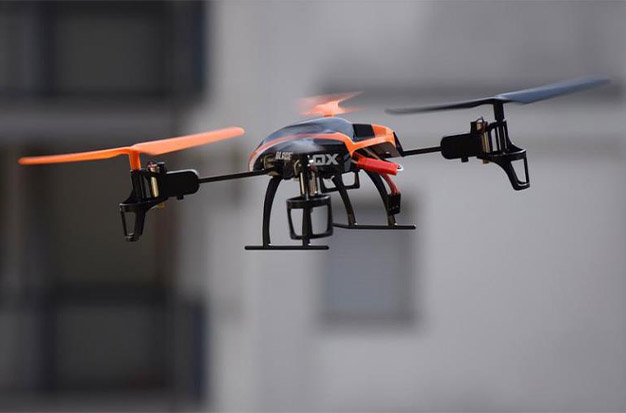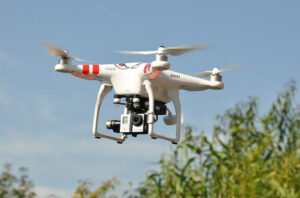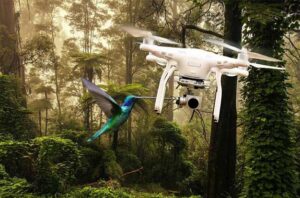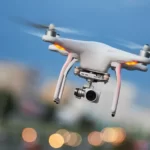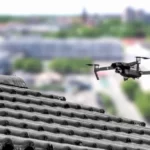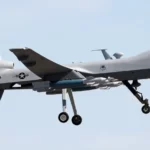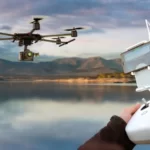The market is in such great demand for drones. The speed they can accomplish can help prevent calamities if you are considering obtaining one.
So, how fast can a drone fly? Commercial drones with cameras often travel at a speed of 40 mph. Some models can travel at speeds of up to 60 mph, and some drones in the lower price range can go at roughly 20 mph. The flying speed of racing drones can exceed 100 mph.
There is always space for improvement, though. You may always adjust a parameter or component to maximize the capabilities of your drone. In this post, we’ll discuss the variables that determine your drone’s speed, how to make your drone fly faster, some excellent recommendations for quick but well-liked drones you can purchase, and much more.
Table of Contents
How Fast Does The Average Drone Fly?
Although a drone’s typical speed is about 45 miles per hour, the FAA considers 100 miles per hour to be the acceptable maximum. But just like driving a car, you don’t fly a drone at top speed.
A drone always has a theoretical top speed that is typically used to deliver it to a certain place, but its operating speed is usually far slower.
When it comes to how drones fly, there are three main factors that affect flight speed: design, flight physics, and legal considerations.
The first thing you need to understand is that racing drones and drones with cameras are not the same thing. Racing drones are not nearly as symmetrical as drones with cameras, which is why they fly faster.
The concept behind increased speed is straightforward: if you can increase horizontal thrust while maintaining the necessary amount of upward thrust to stay in the air, you’ll move faster.
What Are The Common Aspects Affecting Drone Speed?
Now that we understood the basics of a drone flight, let’s discuss what factors influence the speed of a particular drone.
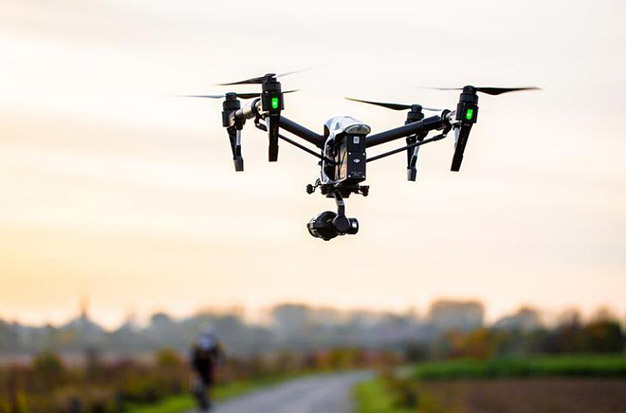
Type & Design Of The Drones
Beginner Drones
Drones for beginners are much less expensive, but they lack decent cameras. They are typically bought by young adults who may be overconfident about their abilities to manage a drone traveling at 50 mph because they are only made for someone who wants to train with one.
They go at a moderately leisurely speed, typically between 12 and 15 mph. but sure, they still have good speed and agility.
A drone like SYMA, which has a speed of 12 mph and is suitable for any novice, is a wonderful choice if you want to get one for a child or teenager.
SYMA X5C-1 is a great drone for beginners.
Consumer Drones
Drones with speeds between 45 and 70 mph include the DJI Mavic and Autel Evo. Consumer drones like this are more suited to adults or people with some experience.
These are the drones that are most frequently seen on TV and in magazines. They are frequently referred to as quadcopters and have 4 blades that offer stability and speed.
Racing Drones
Consider purchasing a racing drone if you enjoy flying rapid drones. Their size, weight, and overall appearance all give the impression that they were created for speed.
These drones have the power to reach high speeds of 60 to 120 mph when they are brand-new from the manufacturer. However, the majority of these drones are customized by their owners, so it’s likely that you’ll see one traveling at least 120 mph.
Undoubtedly, there are other drones that are quicker than racing drones. Let’s stick to what we can get our hands on because they are mostly utilized by the military and aren’t really accessible to the general population.
Weight Of The Drone
In order for a drone to fly, the motors and the forces of nature must constantly battle. Gravity pulls the drone down, and air resistance pushes it in the opposite direction of flight, which are two examples of natural forces at work.
The drone must struggle against gravity more vigorously the heavier it is. Larger size and higher resistance to air also result from increased weight. Therefore, smaller sizes and less weight are required for speed.
Propellers
Rotating motion is converted to linear thrust by propellers. This occurs when the force of spin is strong enough to overcome the pull of gravity. Multirotor drones have pairs of propellers that rotate in opposite directions to maintain balance.
The drone may rise, hover, or sink by changing the rate of spin. An “imbalance” is produced by changing the pace at which the opposite rotors rotate, and this allows the drone to yaw, pitch, or roll.
So what impact do propellers have on drone speed? Higher pitch propellers produce greater lift than flatter ones. Carbon blades weigh less than plastic ones because they are lighter.
Mode Of Operation
Some drones have a unique “sport” mode, like the majority of DJI drone models. The onboard computer disables some accident-proofing safety measures (such as the forward and downward crash sensors) when you are in sports mode. It also increases motor performance by increasing battery power input. So, the operating mode of a drone affects how quickly it can fly.
Atmospheric Conditions
Finally, the speed at which a drone can fly is also influenced by meteorological conditions.
The motors will produce less power when flying your drone in a region with low temperatures, such as northern Canada because the cold batteries won’t fully drain. When compared to warmer climates, a model that typically flies significantly quicker may fly slower due to this lower output.
The speed is also impacted by the wind. A drone must withstand the consequent intake of air that tries to push it back when it is flying ahead. The drone’s speed can be significantly impacted by the wind that is blowing in the opposite direction from where it is flying. Comparable to swimming against the current.
What Makes Drones Faster?
Upgrade your drone to the most potent model with the highest speed when all other options have been exhausted. However, before moving forward, you can attempt these easy tricks to speed up your machine:
- By making your drones weightless.
- Switching to a more durable battery.
- Choose a professional option, such as Sports Mode.
- Install a smaller propeller to reduce the size of the one on your drone.
- Always make an effort to fly in the direction of the wind.
Other techniques for accelerating a drone include:
- Raise the rear propellers.
- Modify the motors and propellers.
- Eliminate any extra weight.
- Fly in the appropriate conditions
- Lights and any other unneeded equipment should be turned off.
- Purchase a strong battery.
If you are not able to upgrade your current drone, you can switch to a better one as well.
Conclusion
Drones can range in size and shape. The plethora of elements described above directly affects the drone’s speed. Every year, a large number of business executives and individuals successfully break the boundaries of what is possible.
How fast do you think a drone can fly in the future?
Read more about: How High Can I Fly a Drone? (Legal And Physical Limits) How Far Can a Drone Fly from Its Controller?
